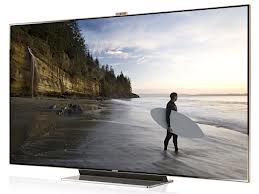It’s pretty obvious that when Canon was making this camera it had it’s target set to Sony’s RX100 series of cameras. I was divided between buying the RX100iii or the G7X, finally opting for the Canon. They are approximately the same size, feature an 1 inch sensor (significantly bigger than other compacts) and have similar feature sets.
(Disclaimer: I own the G7X for about a week now and have been shooting with it around Beijing. I’ve only handled the RX100iii on a camera store and read online reviews and impressions.)
The main advantages of the Canon compared to the Sony are:
+Longer focal range (24-100mm vs 24-70mm). I find the extra 30mm extremely useful both for portraits and semi-telephoto shots.
+Brighter aperture through the range. The Canon stops down slower and has a 2/3 stop advantage at 35mm.
+Touch screen. I find it very useful for quickly placing the focus point, touch to focus (both for video and stills) as well as touch to shutter (touch the screen and a picture is taken automatically). I find the last feature especially useful for capturing candid shots on the street.
+Better optical image stabilisation (IS). My experience with the Canon’s optical image stabilisation is excellent. I can comfortably and consistently take shots at 24mm with a 1/4 secs exposure and they are tack sharp. I can’t perform a direct comparison to the Sony but reading other reviews online it seems that the IS of the RX100 cameras is not to the same standard.
+It’s 100$ cheaper.
On the other hand the RX100iii comes back with:
-Electronic viewfinder. If that’s something you need on a compact then RX100iii is your only option.
-Video quality and options. 120fps, better codecs and bit-rates as well as a click less main dial mean the Sony is better at video.
-Supposedly a bit sharper lens, particularly at 24mm. I am not much of a pixel peeper so this doesn’t really affect me.
Finally, in my personal, biased for the way I shoot, opinion the Canon is significantly better when it comes to..
Handling:
Auto-ISO implementation on Av mode: On the Canon you can specify the minimum shutter speed (you get three options, a slow 1/15, a fast 1/1000 and focal length variable one which ranges from 1/60 to 1/120). Sony gives you no way to specify minimum shutter speed and defaults to 1/40.
The G7X has a dedicated exposure compensation dial. It’s a bit too stiff for my liking but at least it’s there.
Canon is also more intuitive to use on auto-iso manual mode. Auto-iso manual mode is when you set the mode dial to M and activate auto-ISO. Thus you can specify aperture and shutter speed as normal but you still allow the camera to take control of the exposure by modifying the iso value. To shift the exposure up or down you use exposure compensation.
On the Canon you get direct access to all three variables needed for auto-iso M to work (aperture on the front, shutter speed on the back and the dedicated exposure compensation dial).
Finally, the G7X allows you to manually prefocus at a specific focal distance using the electronic distance scale.
Any negatives?
Other than small niggles like the sound of the main dial being a bit too loud and the exposure compensation dial a bit too stiff, not really.
The Canon G7X is small, comfortably fits in my jacket pockets (and snugly fits on my jeans front pocket), it has a long focal range with a wide aperture all the way through and a large 1 inch sensor. The addition of a great control scheme (for the way I shoot) makes this my favorite compact camera on the market at the moment.
More On The Canon G7X

















